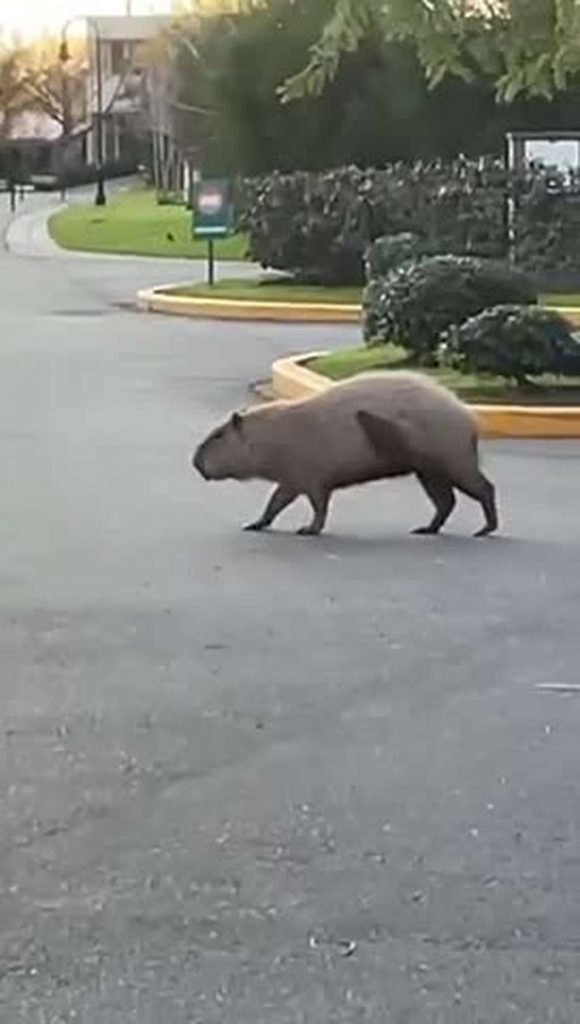Capybaras in Nordelta are back in the news and the debate is reopened. This comes after complaints from the neighborhood residents in 2021, who accused an overpopulation and problems with the animals.
The dispute surrounding the presence of capybaras there remains unsolved. That’s why now a proposal is being analyzed: sterilize them in order to control the population growth.
Capybaras in Nordelta: an old controversy and a new proposal
The problems arose about four years ago, when the capybaras “invaded” the streets of Nordelta and began to enter gardens, pools, and even attack many pets.

Due to the damages caused to the properties, a dispute began even among the neighbors themselves. While many focused on the annoyances, others defended the presence of the animals in a space that was their habitat.
A new controversy has now arisen: the idea of controlling the capybara population with sterilizing vaccines.
The Nordelta Neighborhood Association (AVN) announced a plan to moderate the capybara population in the complex of private neighborhoods.
The project is supported by the Flora and Fauna Directorate of the Buenos Aires province and the support of researchers from the National Scientific and Technical Research Council (CONICET) and the University of Buenos Aires (UBA).
The initiative proposes to apply a vaccine to 250 adult specimens, generating temporary sterility. The vaccination will be outpatient and monitored by specialists in wildlife.
On the other hand, groups like “Capybaras Nordelta we are their voice” and “Endangered Fauna Tigre” rejected the measure and denounced that suitable areas were never created to relocate the animals.
Why are the capybaras in Nordelta
Capybaras inhabit wetlands, such as the Tigre Delta, an area they are native to. Therefore, by establishing a construction of such dimensions, the size of their habitat also became insufficient.
The capybara, chigüire or capybara (Hydrochoerus hydrochaeris) is a herbivorous rodent species of the cavy family, native to South America. It is the largest rodent in the world in terms of size and weight.
“They must be discouraged with sound deterrents or motion lights. But without resorting to electrified fences, and even less with bait or food on the side. It is also a negative attitude to take them as pets, because they are not”, indicated Manuel Jaramillo, General Director of the Wildlife Conservation Foundation Argentina.
 Capybaras: what to do.[/caption>
Capybaras: what to do.[/caption>
“While they are not aggressive, they are defensive. If they are in a dangerous situation, they can cause complications with humans”, he added. “They can also have parasitosis or viral or bacterial diseases. That’s why they should not be harassed or chased, nor domesticated”, Jaramillo emphasized.
Recommendations
Experts agree that it is important to coexist, learn to live together with the animals without posing a danger to them, humans, or pets.
It is essential to remember that the wetland is the ecosystem in which the animal originally lives and obtains its food resources. They should not be attacked or electrified fences placed, as has been seen on occasions.
In any case, they can be discouraged with sounds or lights to make them move away from the specific place. They should not be “humanized” or treated as pets, as they are wild animals.
Do you already know our YouTube channel? Subscribe!

